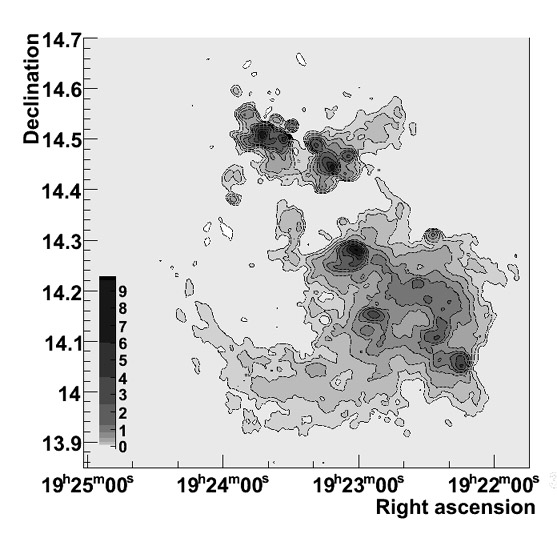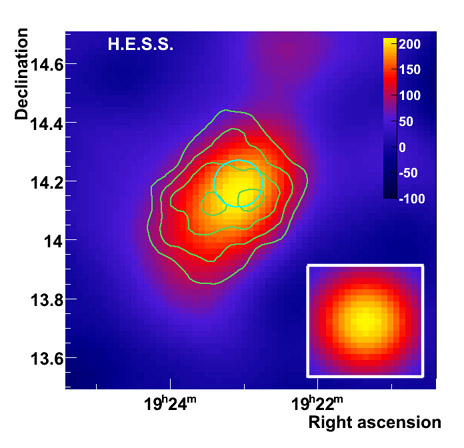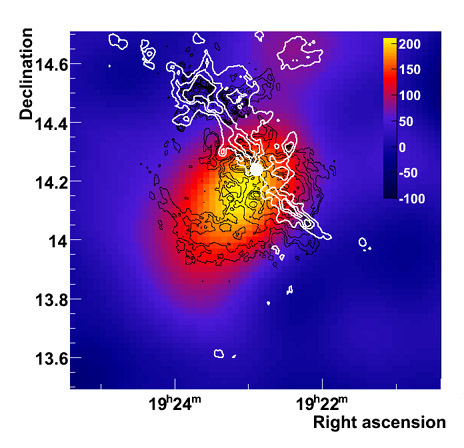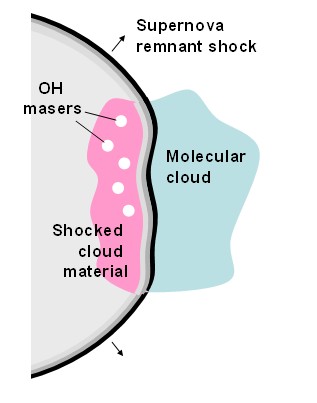A VHE gamma ray source in the W51 region: HESS J1923+141
May 2009

One way to verify that supernova remnants do indeed accelerate cosmic-ray nuclei (as opposed to electrons giving rise to X-ray synchrotron radiation and Inverse-Compton gamma radiation) is to look for supernova remnants which interact with molecular clouds. Gamma rays emerging from the region where the supernova remnant shock and its accelerated particles run into targets of molecular gas provide a unique signature. A promising target region is the W51 complex (e.g. Carpenter & Sanders 1998), with the supernova remnant G49.2-0.7 and dense HII regions. Indeed, in data taken during the H,E.S.S. Galactic Plane Survey in 2007 and follow-up observations in 2008, a source of very high energy (VHE) gamma rays - HESS J1923+141 - was detected in W51, with a flux of about 3% of the flux of the Crab Nebula (Fig. 1) (Fiasson, Moriond 2009).
Fig. 2 illustrates the location of the
gamma-ray source relative to the radio supernova remnant and in relation to
molecular clouds identified via their CO radio emission. Knowing whether the remnant indeed runs into the molecular clouds
is non-trivial, since the distances of the remnant and of the clouds - about 7 kpc -
are not sufficiently well known and one may be in the foreground or in the background
relative to the other. However, in the overlap region in W51, OH maser emission has been observed
(white circle in Fig. 2). The 1720 MHz OH masers are an indicator for
shock-compressed molecular clouds, the shock resulting in a level inversion and
stimulated emission (Wardle & Yusef-Zadeh
2002) (Fig. 3). The peak of the very high
energy gamma ray emission is indeed roughly in the region of the maser emission.
Together with objects such as the
W28 and
IC 443 remnants (Albert
et al. 2007, Humensky 2007), W51 adds to the growing evidence for gamma-ray emission which can be
attributed to supernova remnant shocks interacting with molecular clouds.


